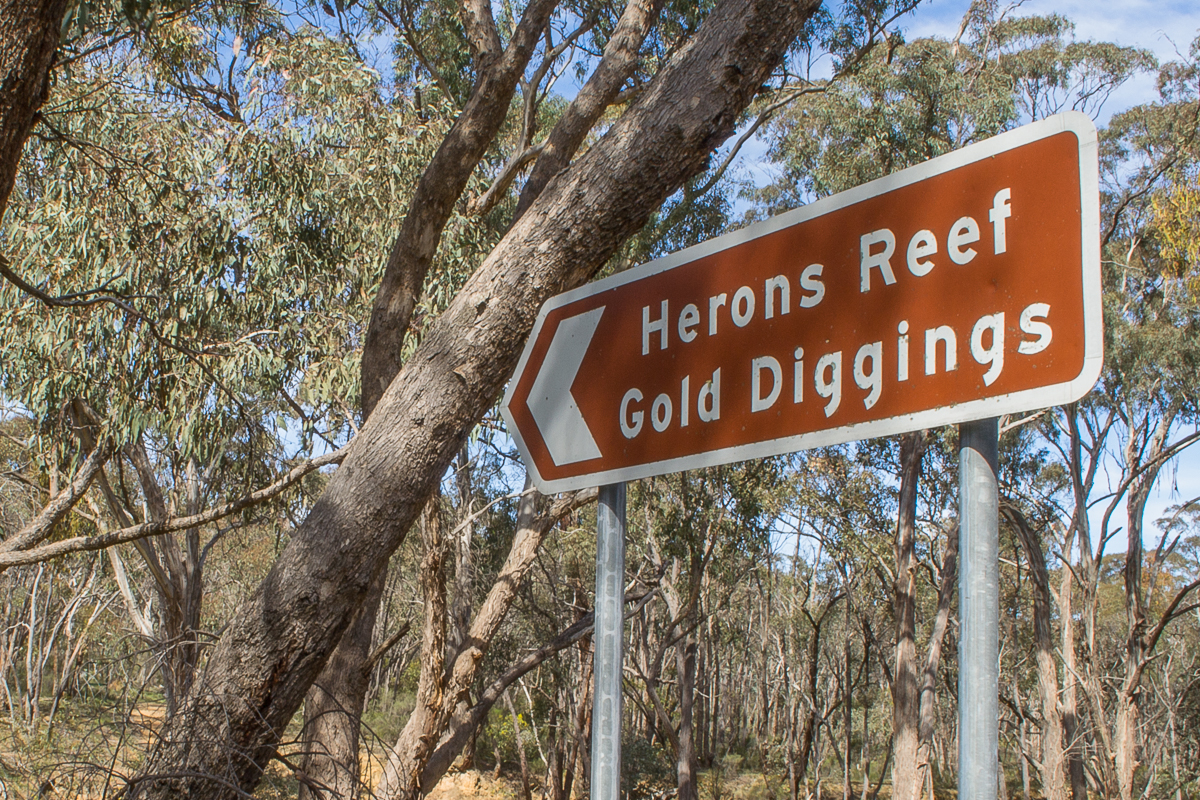Part of the Castlemaine Diggings National Heritage Park, Herons Reef is an extraordinary site in Fryerstown filled with extensive ruins and remnants of the Victorian gold rush.
The area showcases examples of many different methods and eras of gold mining, multiple stone ruins, blacksmith forges, and a remarkably intact Cornish miner's hut.
The Cornish miner's hut was built c. 1867 from local stone and mud mortar, and is the only known surviving hut in such condition on the Fryers Creek goldfield.
The remains of another cottage can be found close by, which has a sign on a tree saying "COTTAGE RUINS c. 1840's".
How to get to Herons Reef
A gravel carpark off the Vaughan-Chewton Road is indicated by a sign for 'Herons Reef', where a dirt road heads through a gate and serves as a walking track through the area.
You can also enter via another walking track which begins down on Crocodile Reservoir Road.
Cornish Miner's hut
If you're only looking for the 1867 miners cottage and the 1840's ruins, start from the gravel parking area on Crocodile Reservoir Road (on the left just after you turn off from the Vaughan-Chewton Road).
This fairly short walk crosses Golden Gully and heads up the hill to the 1840's cottage ruins, before continuing on to the intact miner's cottage.
From there you can continue on through the rest of Herons Reef.
Preservation of Herons Reef
The Herons Reef Gold Diggings used to be privately owned by Les Simmons, who ran an award winning tourist attraction giving comprehensive guided tours of the site's ruins, relics and diggings.
Today the area is included in the Castlemaine Diggings National Heritage Park.
The relics at Herons Reef remain as intact as they are today thanks to Les Simmons' management of the site.
Please note that camping and gold prospecting are not permitted at Herons Reef.
Visitors must take care to preserve the site, please leave everything exactly as you find it.
Historical map of the Castlemaine Mining District, 1860
Map of the Castlemaine Mining District which shows historical features in superb detail, including mining divisions, reefs, gullies, and gold workings. Mining Department, Melbourne, 1860. High quality, durable A1 print in a satin finish. Large, 594 x 891 mm. Go to online shop.
History of Herons Reef
The Herons Reef Historic Gold Diggings takes in a tangle of gullies at the head of Golden Gully and possesses a comprehensive range of gold mining relics, habitation sites and blacksmith forges. The area was first important for alluvial gold, with Golden Gully rushed in early 1852. From 1859 the mining focus shifted to the various reefs that crossed the gully. The main quartz mine was operated by the Anglo Australian Company (later known as Fryers Creek Gold Mining Company) from 1869-90. Golden Gully was hydraulically sluiced at the turn of the century, and appears to have been a favoured ground sluicing locality during the 1930s.
The Herons Reef Historic Gold Diggings is historically and scientifically important as a characteristic and well preserved mining landscape which possesses examples of many forms of gold mining. Gold mining sites are of crucial importance for the pivotal role they have played since 1851 in the development of Victoria. The mining relics at the Herons Reef Historic Gold Diggings are important in illustrating the ongoing and changing nature of gold mining, and how the gold miners lived and repaired their mining equipment.
PROSPECTORS AND MINERS ASSOCIATION VICTORIA
Established in 1980, the Prospectors and Miners Association of Victoria is a voluntary body created to protect the rights and opportunities of those who wish to prospect, fossick or mine in the State of Victoria, Australia.
You can support the PMAV in their fight to uphold these rights by
becoming a member. You'll also gain access to exclusive publications, field days, prospecting tips, discounts and competitions.
SEE ALSO


Has the site been closed ?
Regards.